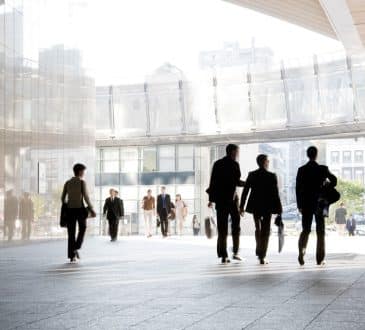How to create thriving culture without anymore ‘to do’s’

Studies have found that the most successful leaders no longer waste time and energy trying to ‘manage’ the motivation, engagement and commitment of others. Instead, they continuously invest in building a culture where their people and teams learn and thrive, even when the work is challenging. And this means a fundamentally different way of leading and shaping culture.
Through my experience leading organisations, and working with leaders across business, education, government and NGOs, I’ve come to realise that the key to being more successful at culture change is to change our thinking around culture. We need to understand it not as something that is separate from leaders, teams or organisations, but as something that is socially constructed – we co-create it together.
In fact, the reality is, we can’t help but create culture, because it emerges as we learn the most effective ways to organise and coordinate our work together. Culture becomes apparent through the patterns in our interactions and dynamics – it is a learning process.
When we look at culture as a socially constructed learning process, we can understand it as the most successful way we are able to be and do together in order to achieve the outcomes we want and need. Over time, these ways of being and doing are normalised through informal rules or norm, and as new members join the group, they recognise that ‘This is the way things are done around here’ and adopt those same ways of being and doing.
This copycatting process of socialisation is hugely powerful, for two reasons. First, it fulfils one of our deepest psychological needs for connection; and second, it meets a very real ‘survival’ need for us, in our desire to be part of the tribe. It also explains how culture embeds and expands, why it stays and sticks, and why it can feel so hard to shift.
The good news is that changing culture doesn’t have to involve lots of additional work or major transformation. Because cultures reflect the shared values and norms to which we are willing to be accountable individually and collectively and are shaped by the daily rhythms of our interactions, which constantly move us either towards or away from the culture we want to be creating; it’s with these levers that we can shape culture. I developed a 4Rs framework to do this work with leaders.
- Role modelling
How leaders show up and behave and where they focus their attention is a powerful influence in creating team norms. This is why culture change only ever truly begins when leaders start to model the mindsets, attitudes and behaviours they want their team to emulate.Are you modelling behaviours, attitudes and mindsets that support a thriving culture?
- Routines
Routines are the formal practices and processes teams use on a regular basis to get their work done; we can think of them as the mechanics of a team or group. Routines save time and energy and increase effectiveness and efficiency of team members.How do your team routines support a thriving culture?
- Rituals
Rituals are the informal practices teams use to build and sustain social cohesion and support a sense of belonging; they are the dynamics of a group or team. Rituals help build and reinforce social norms and shape the thoughts, feelings and behaviours of team members.What of your team rituals support the culture to thrive?
- Rhythm
The rhythm of culture is about the timing with which role modelling, routines and rituals occur. Rhythms signal the perceived importance of a behaviour, routine or ritual and this is important, because research I conducted with the Leaders Lab indicates that unless team members experience something frequently, it really doesn’t stick and stay in their consciousness and make a difference to their mindsets, attitudes or behaviours.What signals is the rhythm of your team culture sending?
Professor Linda Hill’s longitudinal research on leaders who have the most positive impact found that ‘instead of being at the front of the stage, showing others the way, these leaders learned to set the stage and create an environment in which others were willing and able to do the hard work of innovation.’ Using the 4Rs of role modelling, routines, rituals and rhythms as levers to intentionally shape and shift and culture is the way to do this work, without any more to do’s.
And that is what is looks like to lead culture, exceptionally.
Written by Dr Paige William.
Have you read?
Presenting the ‘Anti-budget’: Personal Finance for the C-Suite.
Kazakhstani businessman Rais Agayev on business in the USA from a foreigner’s perspective.
Ten ‘commandments’ for future CEOs.
How to Increase Trust in Hybrid Meetings.
Why Love is your number one leadership strategy in the workplace.
Bring the best of the CEOWORLD magazine's global journalism to audiences in the United States and around the world. - Add CEOWORLD magazine to your Google News feed.
Follow CEOWORLD magazine headlines on: Google News, LinkedIn, Twitter, and Facebook.
Copyright 2025 The CEOWORLD magazine. All rights reserved. This material (and any extract from it) must not be copied, redistributed or placed on any website, without CEOWORLD magazine' prior written consent. For media queries, please contact: info@ceoworld.biz








